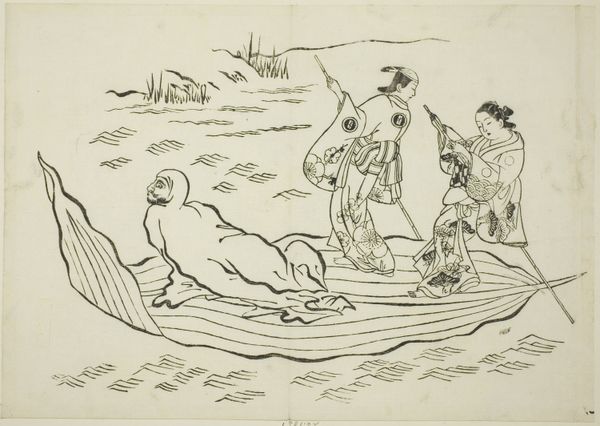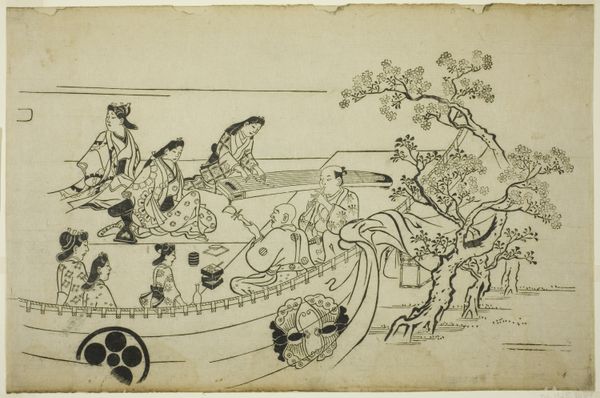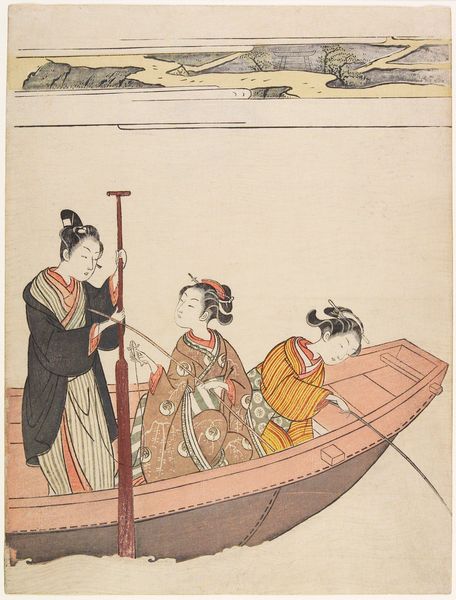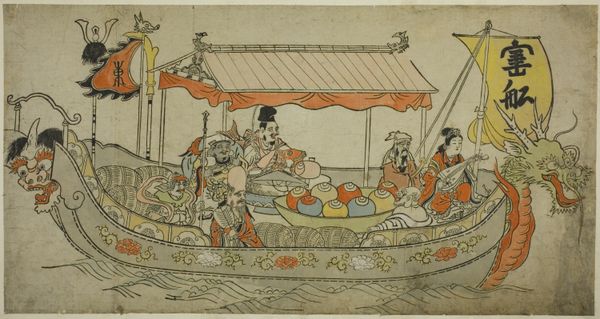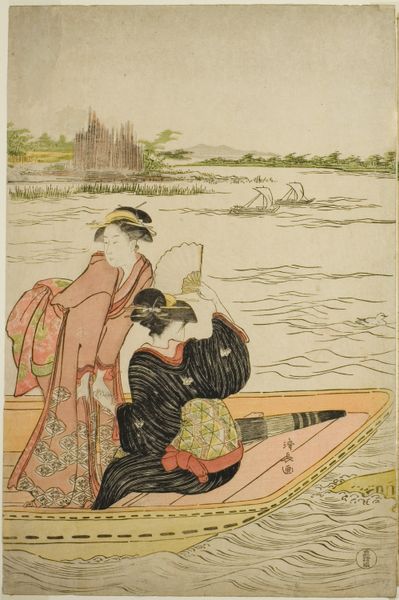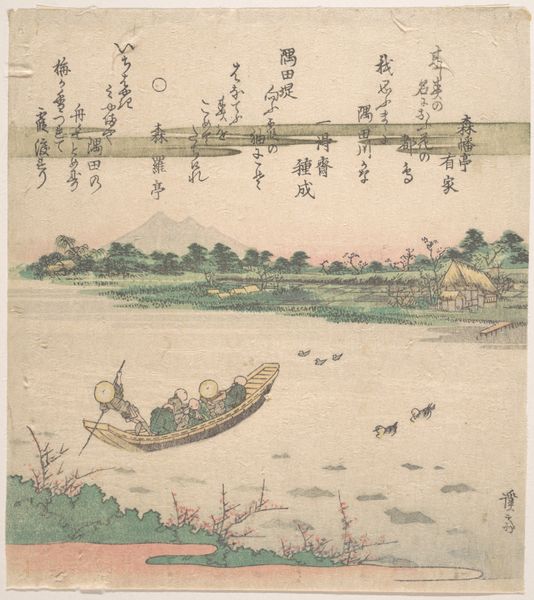
Eguchi and Love's Fishing Boat (Koi no tsuribune Eguchi), no. 4 from a series of 12 prints depicting parodies of plays c. 1716s - 1726s
0:00
0:00
print, paper, ink
# print
#
asian-art
#
ukiyo-e
#
paper
#
ink
Dimensions: 27.2 × 38.6 cm
Copyright: Public Domain
Editor: So, this is Okumura Masanobu's "Eguchi and Love's Fishing Boat" print, made sometime between 1716 and 1726. It's striking how minimalist it is with just ink on paper. I'm curious about that contrast. What is your take on this piece? Curator: Well, considering it through a historical lens, this print gives us a glimpse into the cultural entertainment of the Edo period. These "parodies of plays" suggest a society that was playful with its own traditions. What do you make of the characters depicted? Editor: They seem serene, almost as if they are in their own little world. The women in the boat, especially. And then you have the figure on the shore, much more withdrawn. Curator: Exactly. Notice how the print likely reflects shifts in social roles and theatrical representations of the time. The very act of creating parody speaks to an audience that was critically engaged. Have you thought about who this art was intended for and its impact on public perception? Editor: I imagine it was for a pretty specific, educated audience to understand the parody. But it probably spread pretty quickly, given that it was a print. What statement do you think it made about art’s place in society back then? Curator: Perhaps, how even revered dramas and figures could be reinterpreted, and that this process could foster wider appreciation and, crucially, more discussion. The use of print made it available, democratizing culture. Food for thought about the relationship between art, social commentary, and access. Editor: I never considered how the format influenced the message itself! Thank you, that was really eye-opening. Curator: My pleasure. Thinking about these works in context really enhances our experience, doesn’t it?
Comments
No comments
Be the first to comment and join the conversation on the ultimate creative platform.
